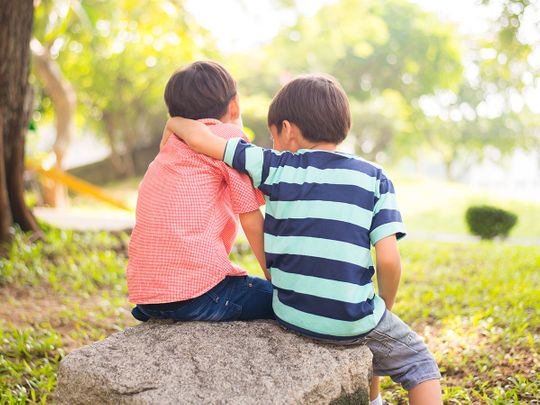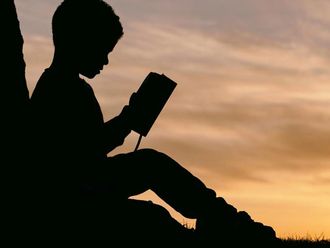
Explaining the impact and reality of Covid-19 to my three-year-old daughter, repeatedly, for the last four months has been a constant lesson in empathy.
Fourteen weeks later her questions now centre around people’s safety, what the doctors are doing (where do they eat lunch mummy? Do they also have a bedtime story after they help people?) versus when she can go to nursery again and fulfil her own needs. In the end, her natural empathetic compass has taken-over her toddler universe, which in all other scenarios is far more likely to be driven by playtime or a brand-new toy!
Empathy is our capacity to take on the perspective of another and to figuratively walk in their shoes. It is something that, as parents, we often do naturally as we teach our children to navigate the world. We talk about “not hurting the feelings” of another, or we ask them to “imagine how daddy feels when you do that?” We encourage our children to understand the context of others almost daily, but is teaching empathy at home enough?
Given empathy is an innate skill we are all born with, and that it is a skill that improves as we practice and use it, should empathy be part of our nursery and school curriculums? Are our teachers helping to create the strongest forms of empathetic community mindedness, motivation and self-awareness?
As many of our children grow up in expat communities and move through their education surrounded by a truly global set of friends and teachers, the ability to empathise and connect with each other is one of the greatest of skills to impart on the generation to come. Empathy teaches our children to learn to understand each other and to build friendships based on trust and mutual connection. It allows them to comprehend the festivals, realities and family structures of those unlike themselves, and to forge forward as united groups of individuals. It creates patience, perspective and depth of relationships, and it prepares children to consider others alongside themselves as they grow and venture into the world. There is also evidence that empathetic classrooms and school cultures can be key to preventing or reducing bullying and other forms of unkind behaviour amongst children.
There is evidence empathetic classrooms reduce bullying
As parents we spend so many of the early years trying to explain to our children why they need to share, why they shouldn’t hit others or why the cat doesn’t like to be pulled by the tail. These are all fundamentally more easily understood in a basis of empathy. Seeking to understand is at the core of what we are trying to teach these tiny citizens of the world.
As a mum there is nothing I would be more grateful for than teachers who teach my little girl to understand that the world seen through the eyes of others is a more vibrant, fairer, and a more balanced world for us all to share. And it's the world we all want to see as we traverse this pandemic and emerge, stronger and more sensitive to the needs of others, on the other side.
How to cultivate empathy in our children
Be the change you want to see
It goes without saying that we should try to practice what we preach and use empathy with our children as a basis for cultivating this type of behaviour. The best way for them to learn empathy is to watch and experience us using it. They trust us and they form attachments with how we parent, so if we parent empathetically, they are far more likely to naturally behave empathetically. Plus, we know that when children feel understood and listened to they are better able to explain what they need, more motivated to learn and engage, and less frustrated. Empathy is at the heart of what it means to be human and creating deep connection between us and our children is the best form of developing more empathy into the world around us.
Mind your language
Language is so key to helping children see things differently – simply reframing a question can unlock a whole host of thinking that might otherwise have been missed. The question “can you help me understand how you see this?” is a great question for us to have in mind for melt downs, disagreements or tantrums. It holds two critical empathetic lenses. Firstly, it shows our children that we practice empathy towards them; that we aim to understand, and to try and see things as they do. Secondly, it becomes part of the child’s habitual response system so that the next time they are in a disagreement or awkward situation with other children their first instinct is to ask that child to also help explain how they see the reality or context.
Ask, don’t tell
This is a key part of all empathetic communication. It’s really important that children frequently get asked how they feel so that they are empowered to share their own feelings. We can’t expect them to empathise with others if we don’t allow them the same opportunity. Replacing saying things like “I know how you feel” with “I imagine you feel like this, am I right?” will encourage the child to open up and to share, whilst accessing their subconscious more often and finding ways to explain the real root cause.
Channel the power of gratitude
Gratitude is such a trendy word now that it gets thrown around a lot, but teaching our children gratitude as a context for understanding others is extremely powerful. For example, the simple act of allowing your child to imagine how their caregiver feels at the end of a day will encourage the children not to see the caregiver only as their “grandma” or “nanny” who looks after them, but as an individual with their own needs and feelings that we can be cognizant of. Giving our children the opportunity to practice empathy will allow them to form a natural reflex and, in time, they will become better and better at tuning into those around them instinctively.
Empathising with each other pulls us closer together as a family unit, it allows us to tell our children “you are not alone and I want to understand how this feels to you” and it is a phenomenal tool to help us understand what is behind certain behaviours. It also inspires our children to practice more empathy themselves. For young children this skillset can be hard to understand and difficult to master so it will be a work in progress throughout most of childhood. The distinction between self and other matures quickly though and as it does, empathy will follow. For example, if a one-year-old sees that a friend is upset he may go get his own mother to comfort him. A two-and-a-half-year-old in the same situation may get his friend’s mother because he now understands that his friend would want his own parent in a time of distress.
Responding with empathy as parents takes practice and patience, but making small changes in our own approach can help our children form big changes in the way they engage with the human beings they are to meet in the years ahead.
Mimi Nicklin is a communications specialist, business coach, author and empathetic influencer based in Dubai
Read more:








